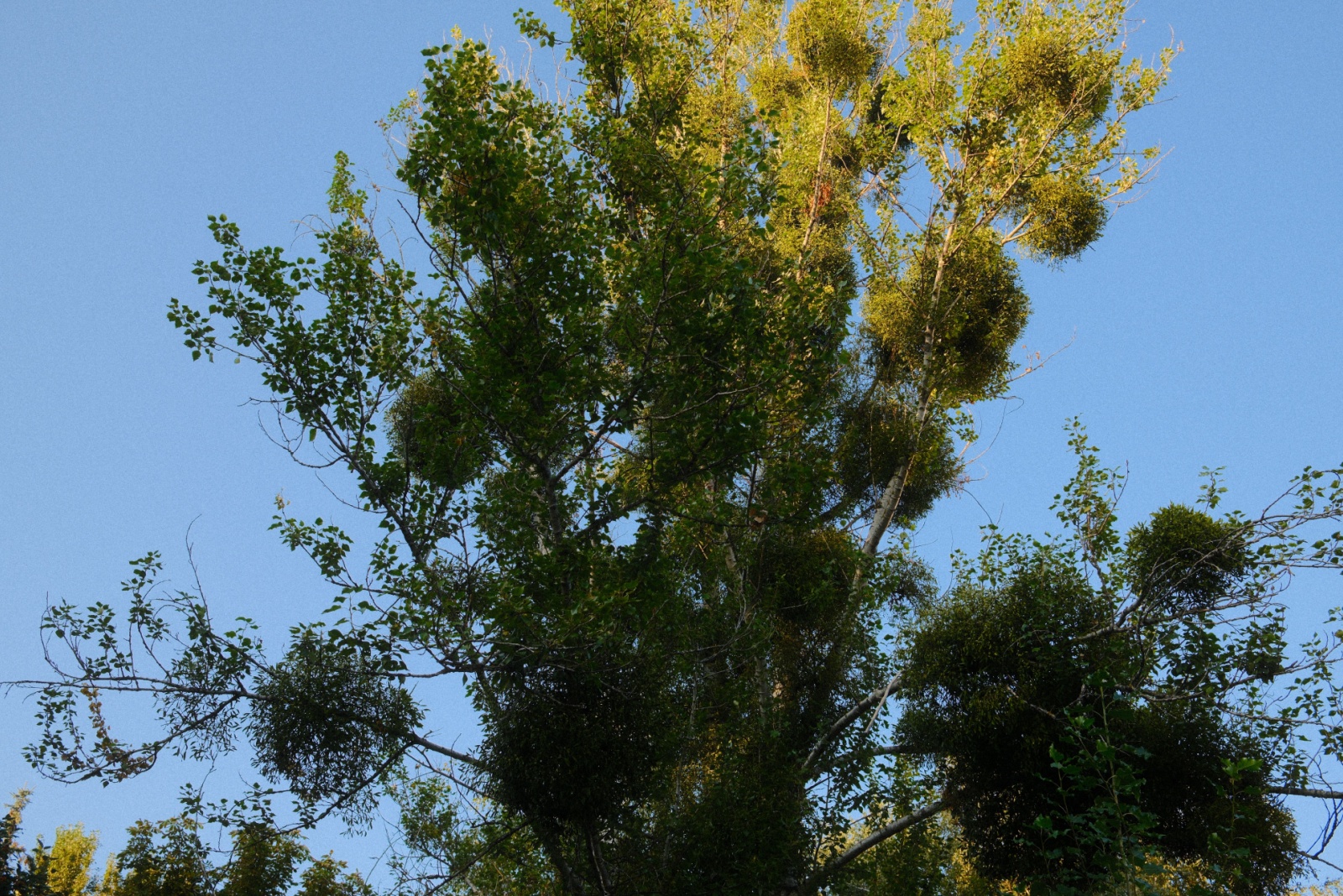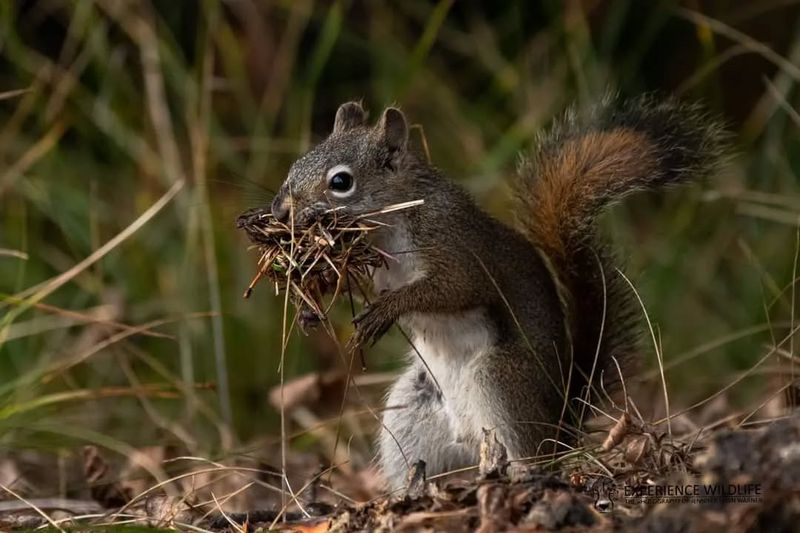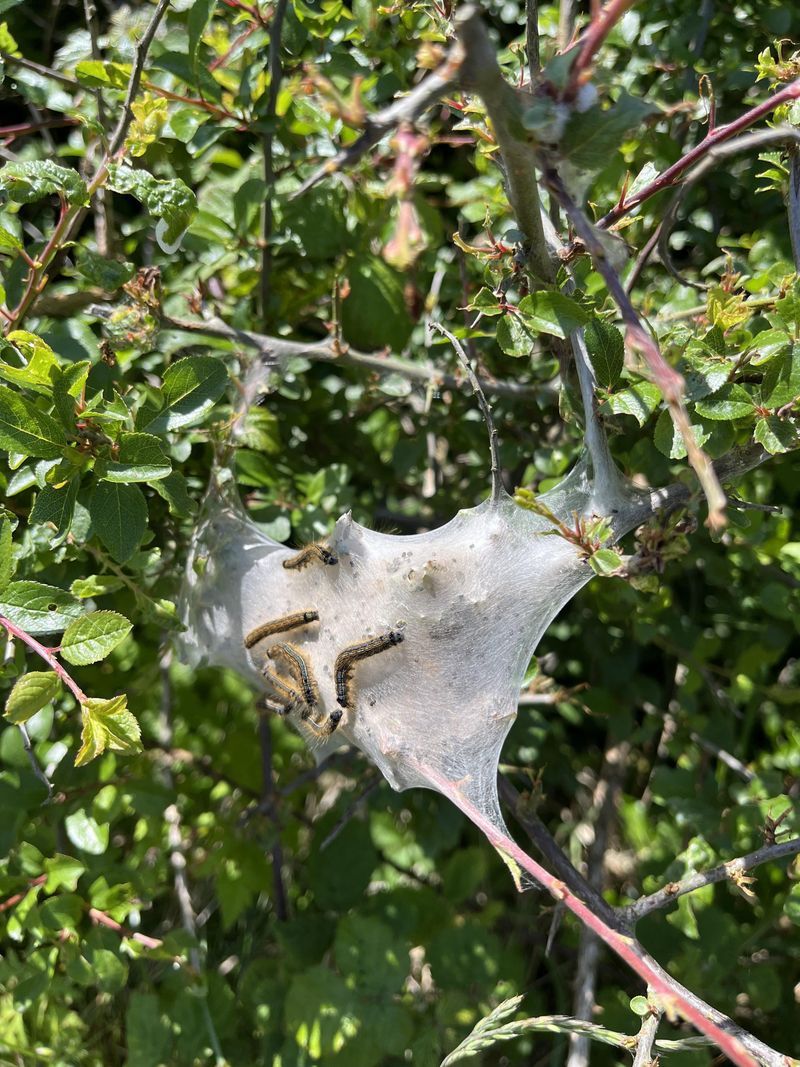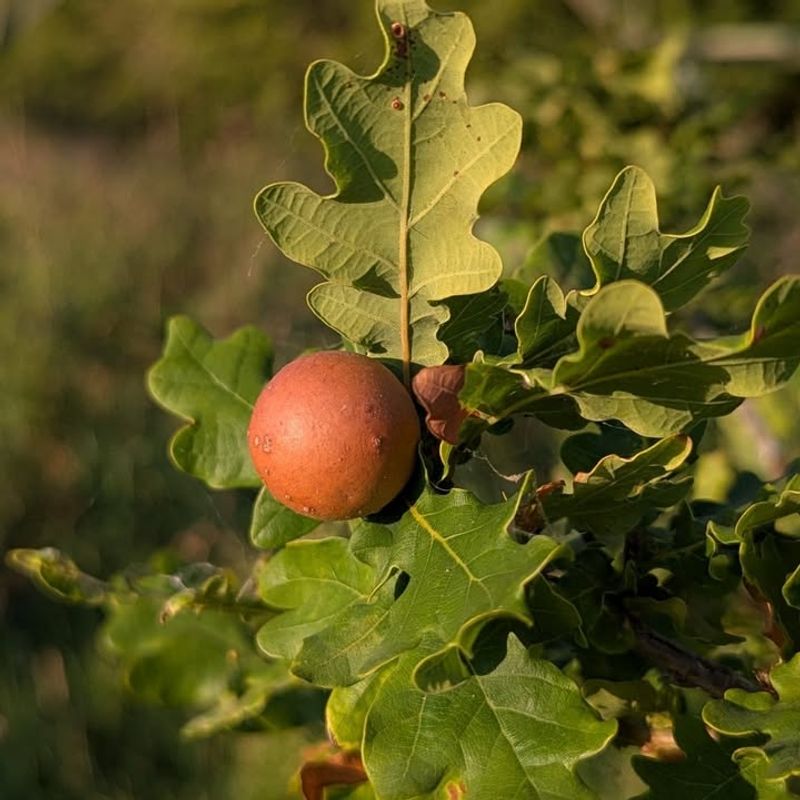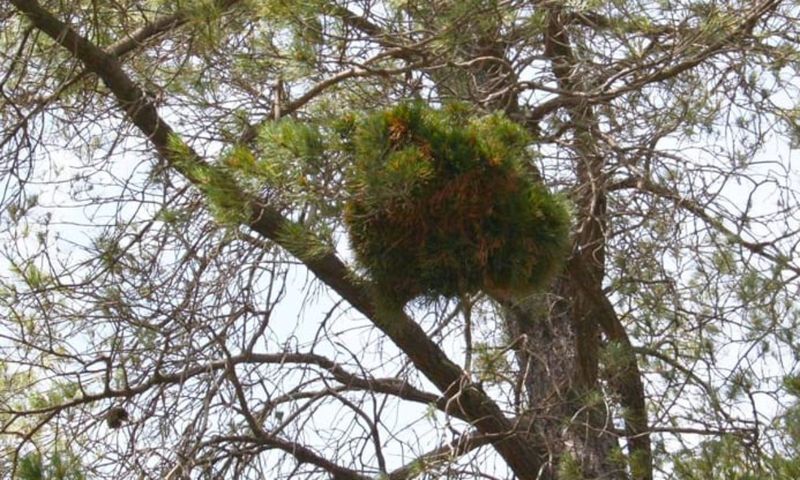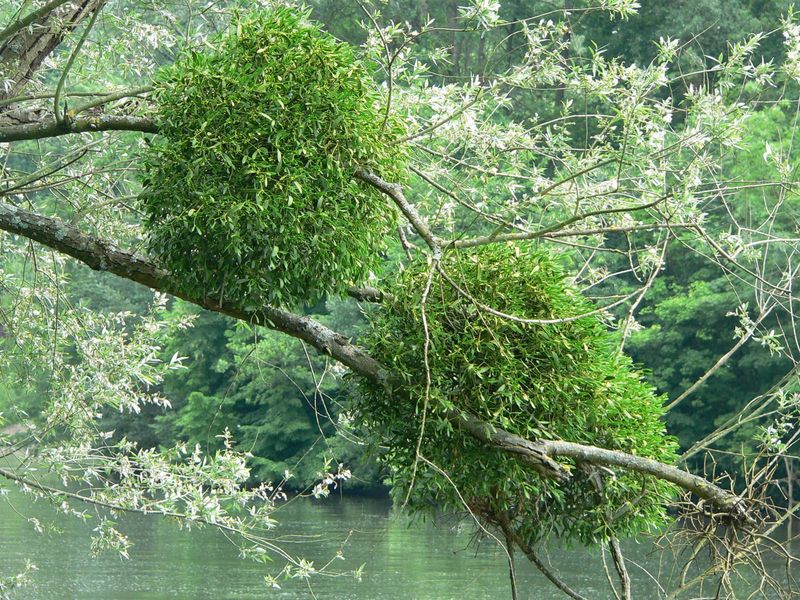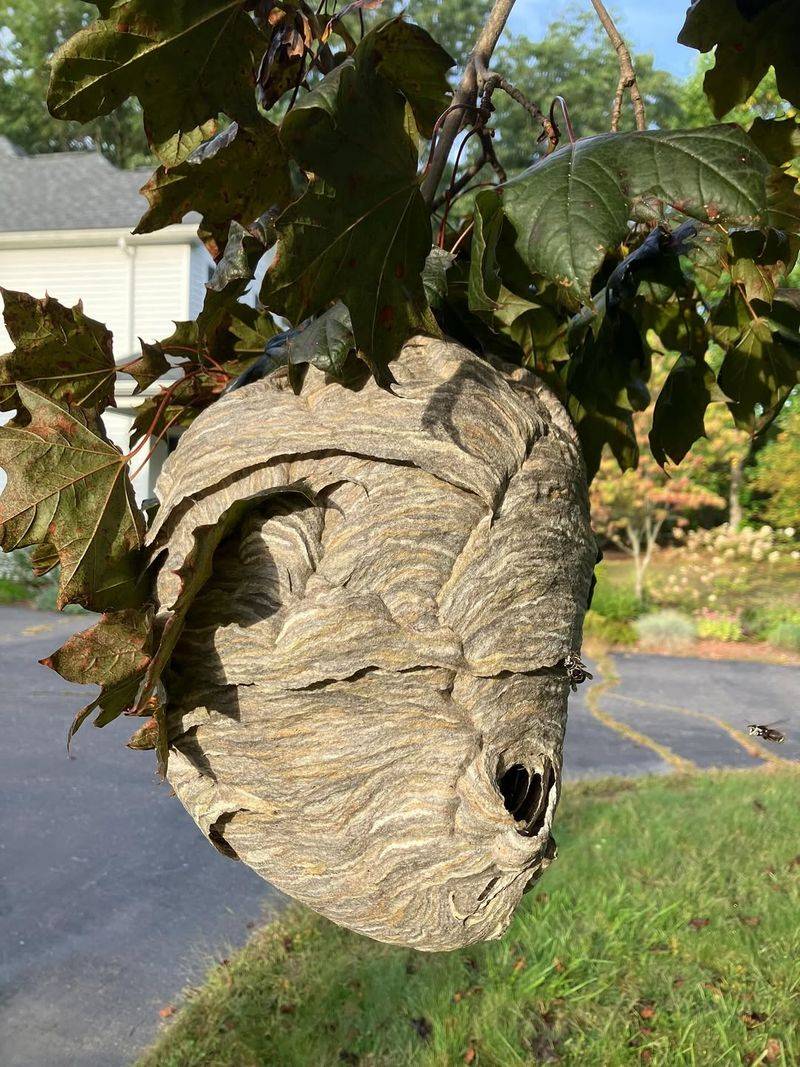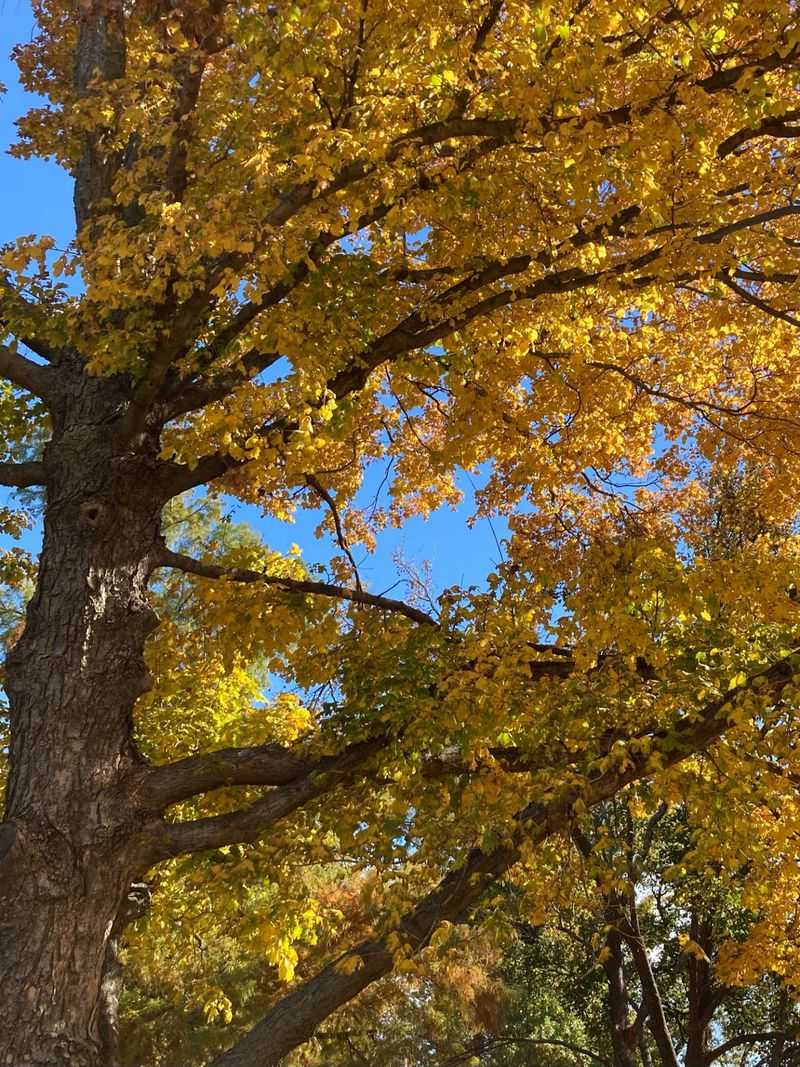You’ve probably spotted a round clump of leaves high up in a tree and wondered if birds made it their home. Before you grab binoculars to watch for feathered friends, there’s something you should know.
Those leafy spheres in New Jersey trees are usually created by something entirely different, and understanding what they really are can help you better care for your yard.
1. Squirrel Dreys Are The Real Architects
Squirrels build these cozy leaf structures called dreys, especially during fall when New Jersey temperatures start dropping. Unlike bird nests made from carefully woven twigs, dreys are packed tightly with layers of leaves, bark, and moss to create insulation.
You’ll typically spot them wedged between branches or against tree trunks. Squirrels prefer oak and maple trees because the sturdy branches support their bulky homes.
During winter, a single squirrel might maintain several dreys throughout your neighborhood for emergency shelter options.
2. Bagworms Create Protective Cocoons
These peculiar caterpillars construct cone-shaped bags from silk and bits of the host plant, which often resemble small leaf bundles. Bagworms can seriously damage trees across New Jersey if left unchecked, especially evergreens like juniper and arborvitae.
Each bag houses a single larva that feeds on needles and leaves throughout summer. Female bagworms never leave their protective cases, even as adults.
If you see these hanging structures, remove them immediately by hand to prevent an infestation that could weaken or kill your trees.
3. Gall Formations Trick The Eye
Galls are abnormal growths caused by insects, mites, or fungi that trick trees into forming these odd structures. Oak trees throughout New Jersey commonly develop round, apple-sized galls that look remarkably like messy leaf clusters from a distance.
Inside each gall lives a tiny wasp larva safely developing until maturity. While they might seem alarming, most galls won’t seriously harm healthy trees.
The tree essentially creates a nursery that provides food and protection for the developing insect while isolating it from the rest of the plant.
4. Witch’s Broom Disease Creates Dense Clusters
This unusual plant disease causes branches to grow in tight, tangled masses that collect leaves and create ball-like formations. Fungi, viruses, or mites trigger the abnormal growth pattern, and it’s more common in New Jersey than many homeowners realize.
Hackberry trees are particularly susceptible to developing these strange clusters. The dense twig growth traps falling leaves, making the formation even more prominent during autumn.
While witch’s broom rarely kills trees, removing affected branches can improve appearance and prevent the condition from spreading to other limbs.
5. Mistletoe Clumps Masquerade As Leaf Balls
This parasitic plant forms rounded evergreen clumps in tree branches that many people mistake for bird nests or leaf piles. Though mistletoe is more common in southern states, it does appear in southern New Jersey counties where winters are milder.
The plant sends roots into tree branches to steal water and nutrients, which can weaken the host over time. Birds spread mistletoe seeds after eating the sticky white berries.
If you spot these persistent green clusters during winter when other leaves have fallen, you’re probably looking at mistletoe rather than accumulated foliage.
6. Paper Wasp Nests Look Surprisingly Leafy
Paper wasps are master builders that construct nests from chewed wood fibers mixed with their saliva. These nests often appear as grayish-brown balls hanging from tree branches, easily mistaken for clumped leaves from a distance.
During fall, when wasps abandon their summer homes, these papery structures become more visible among bare branches. The umbrella-shaped nests can grow quite large, sometimes reaching the size of a basketball.
Many New Jersey residents discover these architectural wonders only after leaves drop in autumn. Interestingly, paper wasps were among nature’s first papermakers, perfecting their craft millions of years before humans invented paper.
7. Leaf Clusters Form Around Broken Branches
Strong winds, ice storms, and natural branch breaks create perfect spots where leaves accumulate throughout the seasons. When a branch cracks but doesn’t completely fall, it forms a natural basket that catches and holds falling leaves.
Over time, dozens of leaves pile up in these spots, creating dense balls that stick together through rain and decomposition. These leaf clusters become especially noticeable during winter when surrounding foliage disappears.
The trapped leaves compress and darken, forming tight spheres that mimic the appearance of constructed nests. Next time you spot one, look closely for the broken branch underneath holding everything together like nature’s accidental sculpture.

